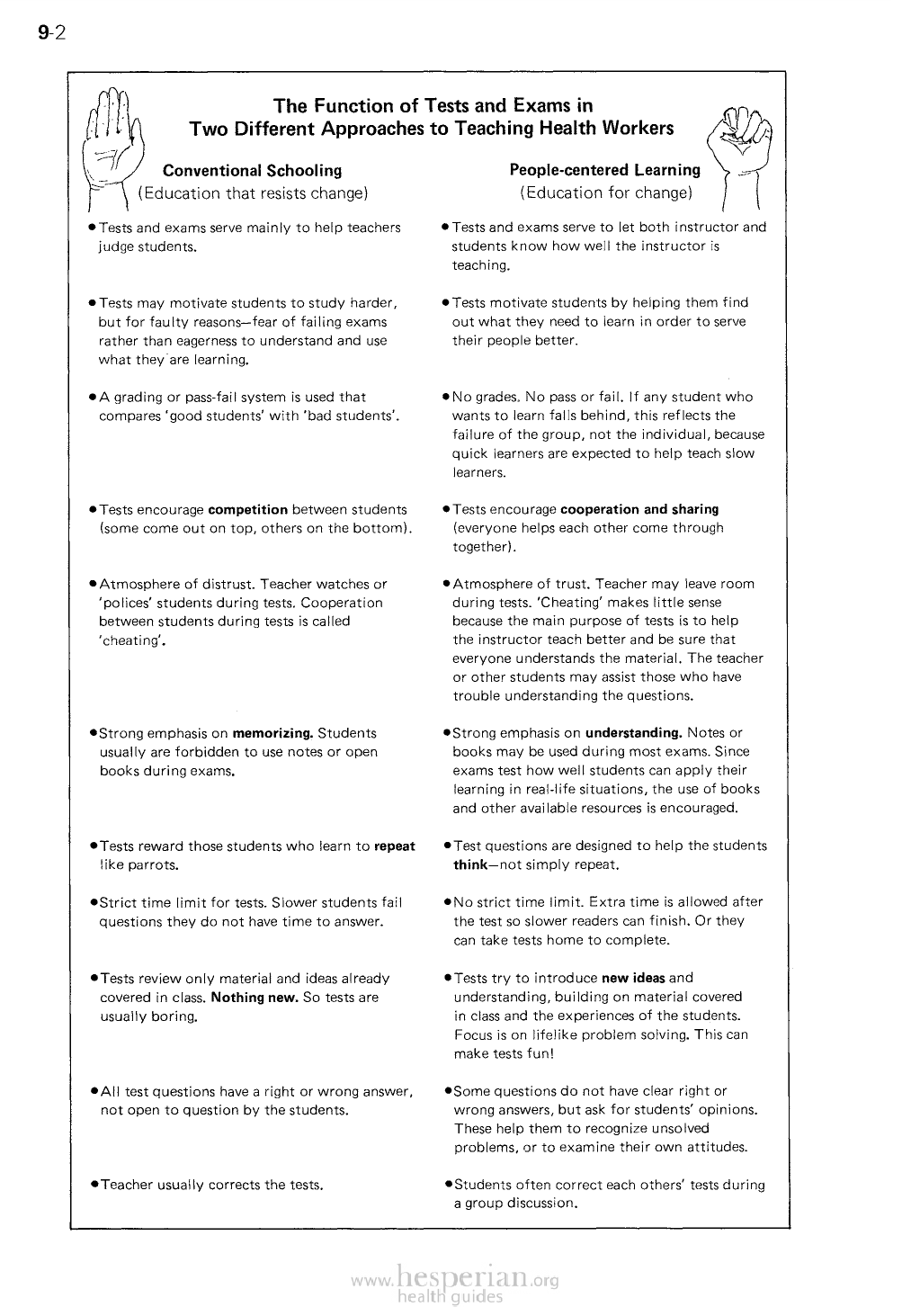
9-2
The Function of Tests and Exams in
Two Different Approaches to Teaching Health Workers
Conventional Schooling
(Education that resists change)
• Tests and exams serve mainly to help
teachers judge students.
• Tests may motivate students to study harder,
but for faulty reasons—fear of failing exams
rather than eagerness to understand and use
what they are learning.
• A grading or pass-fail system is used that
compares ‘good students’ with ‘bad students’
People-centered Learning
(Education for change)
• Tests motivate students by helping them find
out what they need to learn in order to serve
their people better.
• Tests motivate students by helping them find
out what they need to learn in order to serve
their people better.
• No grades. No pass or fail. If any student
who wants to learn falls behind, this reflects
the failure of the group, not the individual,
because quick learners are expected to help
teach slow learners.
• Tests encourage competition between
students (some come out on top. others on
the bottom).
• Tests encourage cooperation and sharing
(everyone helps each other come through
together).
• Atmosphere of distrust. Teacher watches or
‘polices’ students during tests. Cooperation
between students during tests is called
‘cheating’.
• Strong emphasis on memorizing. Students
usually are forbidden to use notes or open
books during exams.
• Tests reward those students who learn to
repeat like parrots.
• Strict time limit for tests. Slower students fail
questions they do not have time to answer.
• Tests review only material and ideas already
covered in class. Nothing new. So tests are
usually boring.
• All test questions have a right or wrong
answer, not open to question by the students.
• Teacher usually corrects the tests.
• Atmosphere of trust. Teacher may leave room
during tests. ‘Cheating’ makes little sense
because the main purpose of tests is to help
the instructor teach better and be sure that
everyone understands the material. The teacher
or other students may assist those who have
trouble understanding the questions.
• Strong emphasis on understanding.
Notes or books may be used during
most exams. Since exams test how well
students can apply their learning in real-
life situations, the use of books and other
available resources is encouraged.
• Test questions are designed to help the students
think—not simply repeat.
• No strict time limit. Extra time is allowed
after the test so slower readers can
finish. Or they can take tests none to
complete.
• Tests try to introduce new ideas and
understanding, building on material
covered in class and the experiences of
the students. Focus is on lifelike problem
solving. This can make tests fun!
• Some questions do not have clear right or
wrong answers, but ask for students’ opinions.
These help them to recognize unsolved
problems, or to examine their own attitudes.
• Students often correct each others’ tests during a
group discussion.